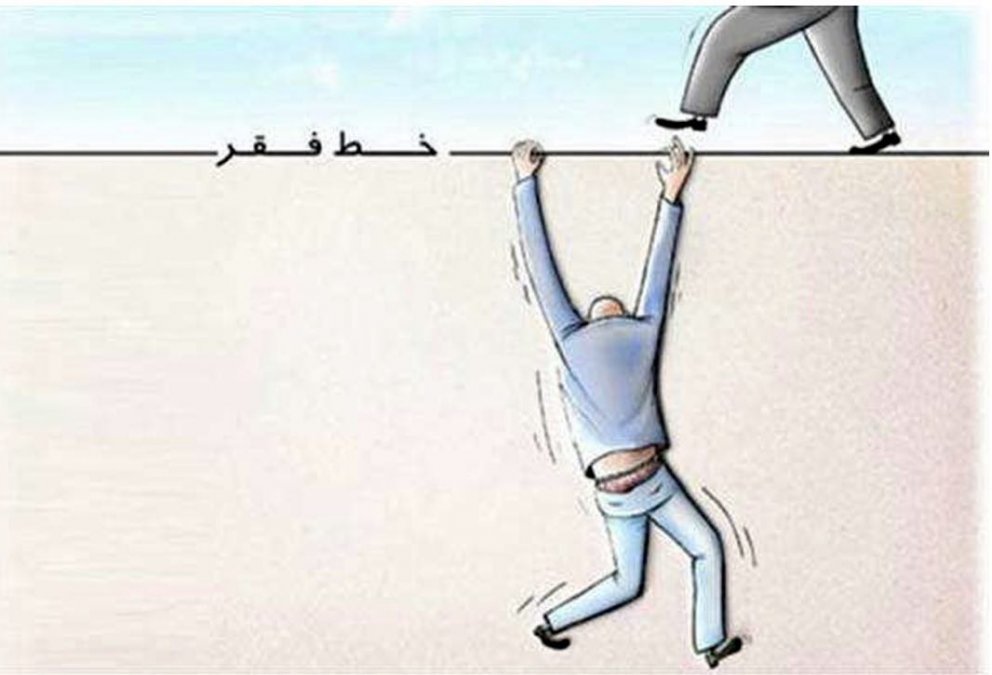Poverty Looms Over the Middle Class
Poverty Looms Over the Middle Class: According to Iran Gate, the poverty line reaching thirty million signifies the fall of the middle class into the pit of poverty. The misery index in the provinces of Hormozgan, Kermanshah, Khuzestan, Lorestan, and Chaharmahal and Bakhtiari has set another historical record.
An examination of the official June report by the Iranian Statistics Center shows the average unemployment rate of 9% in 2022 and inflation of 48.5% in June 2023, indicating that the misery rate in eight Iranian provinces is above 60%, and in the remaining provinces, it stands above 55%. The misery index is an economic indicator obtained by adding the unemployment rate to the inflation rate annually, and its increase also extends the risk of social harms.
Among the provinces of Iran, Hormozgan has the highest misery rate at 64.3%, followed by Kermanshah at 63.4%, Khuzestan at 61.1%, Lorestan at 61%, West Azerbaijan at 60.9%, Chaharmahal and Bakhtiari at 60.8%, and Yazd at 60.3%, ranking second to eighth in the highest misery levels. The rise in unemployment in Hormozgan occurs despite the province having maritime and oil industries due to its proximity to the sea.
Official reports from the Statistics Center show that Hormozgan recorded the highest unemployment rate among the country’s provinces in 2022 at 15.8%. Officials in this province claim that one of the reasons for the increased unemployment rate is the entry of women into the job market. According to these officials, women in this province had not previously sought jobs due to cultural and social reasons.
However, the rise in inflation and economic pressures have driven women to enter the job market in this province, and all this happens while the people of this province say that jobs for men are hard to find. Traditionally, the occupation of the people of Hormozgan due to its proximity to the sea is fishing. In recent years, there have been many protests from the fishermen of this province regarding the government’s policies on leasing the sea to Chinese companies.
According to Hormozgan fishermen, dozens of ships known as Chinese trawlers daily sweep the sea floor and capture fish, and this type of fishing not only harms the province’s aquatic reserves but also causes unemployment for hundreds of small fishing boats.
Misery as a Cause of Crime
With the rise in inflation and the increasing poverty line in Iran, the shadow of the misery index has spread and become heavier over many provinces of Iran. Provinces that house Iran’s major industries and had low unemployment rates in the past years are now, in terms of the misery index, above the national average, such that Yazd, Kerman, Isfahan, and Ardabil are also ranked among the provinces with high misery indices.
Among the provinces with the highest misery index, border provinces are at the top. These are the provinces that witnessed the most repression by the government during the protests following the gasoline price hike in November 2019 and also in September 2022.
High unemployment rates have led the people of border provinces to resort to smuggling goods. In the western provinces, ‘kolbari’ is recognized as a job, a job where every year some citizens lose their lives either by being shot by border forces or by accidents or hypothermia in difficult terrains.
The situation in the eastern border provinces is considerably worse. Fuel smuggling is a phenomenon that has become the primary occupation of the people in these areas over the past four decades due to the government’s neglect. Those involved in this occupation constantly face the risk of conflict with military border forces, and this cycle continues.
Simultaneously with the rise in inflation, the state of social welfare in Iran has deteriorated over the past five years. An examination of the government’s official statistics shows that the misery index has increased from 19.3 in 2016 to 57.7%. The highest misery index in Iran was previously recorded in 1995, with a figure of 58.4%.
According to economists, the increase in the misery index can expand the risk of social harms such as crime, poverty, suicide, a decrease in the population growth rate, and divorce, a risk that has become more widespread and heavier over Iranian society over the past decade.
A Temporary Agreement Does Not Solve Iran’s Economic Problems
English
View this article in English

